Green Materials
Use durable products and materials: Because manufacturing is very energy- intensive, a product that lasts longer or requires less maintenance usually saves energy. Durable products also contribute less to our solid waste problems. (1)
Cleary Post Frame Buildings: Steel roofing is a more durable product with lower life-cycle costs than most other roofing systems available. The use of steel roofing reduces the amount of shingles and other roofing system materials going into our landfills. When used as a reroofing option, steel can often be installed over the original roof, saving removal and disposal costs. Steel roofing and siding is also recyclable at the end of its useful life.
Choose low-maintenance building materials: Where possible, select building materials that require little maintenance (painting, retreatment, waterproofing, etc). (1)
Cleary Post Frame Buildings typically use steel trim and siding requiring little or low maintenance. When used as an interior finish on walls and ceilings steel provides a durable, low maintenance finish for commercial, industrial and agricultural applications.
Use building products made from recycled materials: Building products made from recycled materials reduce solid waste problems, cut energy consumption in manufacturing, and save on natural resource use.(1)
Cleary Post Frame Buildings predominantly use Central States Manufacturing, Inc. steel for exterior siding and roofing materials as well as interior steel ceiling and wall liners in applicable situations. “Steel is the world’s most recycled material. In the United States alone, nearly 70 million tons of steel were recycled in 2000. Every ton of steel that is recycled saves 2500 pounds of iron ore, 1400 pounds of coal and 120 pounds of limestone. New steel made with recycled content uses as little as 26% of the amount of energy that would be required to make steel from raw materials extracted from nature(2).
Seek responsible wood supplies: Use lumber from independently certified well-managed forests. Avoid lumber products produced from old growth timber unless they are certified. (1)
Cleary Post Frame Buildings use renewable resource Southern Pine and Spruce-Pine- Fir lumber as the primary structural framework throughout the building. Lumber from sustainable and renewable forestry resources provide a more environmentally friendly source of constructions materials than old
growth timber resources.
“Sustainable forestry means managing timberlands and their various resources to meet the needs of present generations without compromising the ability of future generations to meet theirs. It also means following a land stewardship ethic that integrates timber harvesting for useful products with conservation of soil, air, and maintenance of water quality and wildlife and fish habitat”(5) Although it is difficult to verify which forests all purchased lumber comes from due to the purchasing of large quantities of lumber from multiple brokers who in turn purchase from various lumber mills, lumber used in Cleary buildings is certified in part to various forestry management standards such as the Sustainable Forestry Initiative Standard (SFIS), the Forest Stewardship Council Standard (FSC) , and ISO 14001 environmental management system certification.
References
- Environmental Building News’ “Check list for Environmentally Responsible Design and Construction”
- Technical Bulletin : Draft #3 “Recycled Content of Metal Roofing and Siding panels” (information developed by Bill Croucher, P.E. Director-Engineering)
- Potlatch Corporation forest management philosophy.
- Frame Building News’ “Life Cycle Analysis, Cost” by Daniel Hindman, PhD
